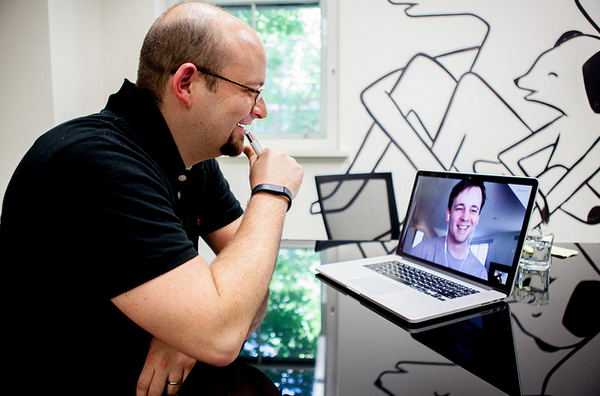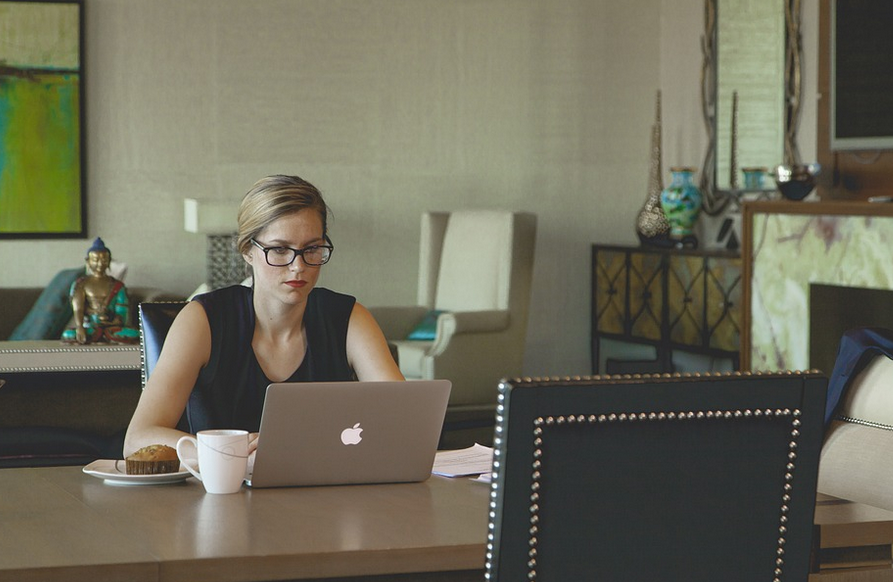Accessing the Office, 24/7
Posted on September 21, 2016, at 4:12 p.m.
by Lynn Brantley.
Cozy thinking pods, video games and recreational rooms with pingpong tables — that is what we think of when we envision the flexible workspace. But for the everyday public relations professional, the workplace isn’t just about collaborative thinking and creative flow. It’s about producing the highest quality work, at any given moment.
PR professionals are constantly plugged into communication outlets. Whether it’s checking Twitter in the elevator on the way to the office, responding to client emails at the hair salon, or Skyping with a colleague from a laptop, the mobility of the workplace has translated into its own version of a flexible office culture within many PR agencies.

Working remotely
In a PRWeek article, Chris Daniels explained that 91.8 percent of 2015 Best Places to Work respondents stated that they are offered the option to work from home. About 40 percent of those respondents said they work from home one to five days a month.
Many PR agencies are flexible when it comes to employees working from home, especially when they are focusing on specific tasks or have scheduled appointments.
So does working from home block communication internally?
SHIFT Communications Account Executive Paige Jeffery believes with such unprecedented access to technology, agency personnel can stay just as connected outside the office as they do inside.
“Our communication doesn’t really change much. It’s mainly via email and Skype for Business, a messenger chat application,” said Jeffery. “The only downside is that you can’t resolve an issue as quickly as you could in person.”
Why have flexible workspaces grown?
Flexible workspaces developed within agencies as a result of the adjustment to “modern” offices. Offices have shifted from small, break room encounters to an open concept for creativity to bounce from one person to another.
Jennifer Brady, office and operations manager of public relations firm AR|PR, discussed the interest in flexible workspaces.
“Because PR is 24/7,” said Brady, “the news, the media, it does not go away. You’re constantly working and constantly connected to your phone all the time. It’s happening so quickly and frequently.”
Immediate access to communication channels is at our fingertips, which is the reason why PR professionals tend to work without even noticing. Brady suggested that this nonstop communication connection eventually needs a break.
“I think that people are like, ‘I’m always going to be working; I need some me time,’” said Brady.
Flexibility: An asset, not a benefit
Flexible workspaces are such a large promotional tool among millennials entering the workforce that it’s easy to forget that flexible schedules should be valued rather than expected.
Agencies such as AR|PR are open to giving their employees time to work from home while taking care of clients, and themselves, as they produce high-quality work.

“We definitely promote flexible workspace when talking to potential hires, but it’s not our primary focus because it is an asset rather than a benefit to the position,” said Brady.
Brady stated that AR|PR’s flexible culture comes from a “work hard, play hard” philosophy.
How can we improve flexible workspaces?
Brady noted that there is a high burnout rate within the corporate/agency PR world, which is why there aren’t a lot of older people in the industry. A study constructed by Michael Farr and Laurence Shatkin, Ph.D., positions the PR industry with only 18 percent of workers over the age of 55.
Could that be an effect of lack of flexible workspaces?
Although unsure exactly how to keep employees from becoming exhausted, agencies should recognize and work on this challenge to keep experienced employees around.
Jeffery offered insight to incorporating flexible workspaces and turnaround rates.
“People often leave companies because they feel they will enjoy working more if they are in a different environment,” Jeffery said. “So by creating a positive workspace, people will feel less inclined to leave.”
What’s next?
If an agency decides to create a flexible workspace, there are several steps to ensure that environment becomes a reality for its employees.
In a PRMoment article, Sean Ball, marketing director of PR system Pragmatist, defined three steps to success:
1. “Equip teams with the right resources.”
2. “Schedule regular video conferences to share information.”
3. “Take time to share personal updates.”
These steps correlate with the access to technology at any given time or place. PR professionals are challenged every day to keep their resources updated to provide their employees with an efficient experience in and outside the office.
“Most collaboration technology today has a lot of technical flaws,” said Jeffery. “So if an agency wants to cater to employees’ ‘flexible’ needs, they should think of all the ways to make their experience positive.”
With the ability to access the office 24/7, PR professionals continue to progress their work tasks and flexible office culture. So the inquisitive question arises, how far can flexible workspaces stretch?




